In the shade of Stoke-on-Trent’s derelict pottery kilns, hidden from the surrounding town through dense layers of undergrowth, Dave is hunched over a giant glass bong encrusted with plastic jewels, pinching a baggie of dull grey powder.
“I f***ing hate it,” he says, jimmying the corners so that flecks of dust tumble into the bowl. “That is about £10 worth. For a person who can’t handle it, who hasn’t got a strong mind, that would discombobulate their head to f***.”
To outsiders, the drug is still called “monkey dust”, an absurd name that belies the synthetic stimulant’s sinister reputation. None of the users call it that, though. It’s just “dust” – a name that seems more innocuous and mysterious.
Dave leans over the bong, a long scar on his neck arcing out from under his hoodie (“a split jugular,” he explains). He carefully touches the flame to the little grey mound, and inhales deeply, holding the smoke in his lungs.
“This is what it does to people,” he says, his lungs full. “You just keep holding it in. The longer you hold it in the more you feel it.”
He exhales, and immediately starts hacking up phlegm.
“Straight away, I’ve got my nervous cough come back,” he says. “I can’t catch my breath properly. My heart is going a million miles an hour. I can’t speak properly, can’t think properly.”
“It brings out the evilness inside you, or whatever bad problems you’ve got.”
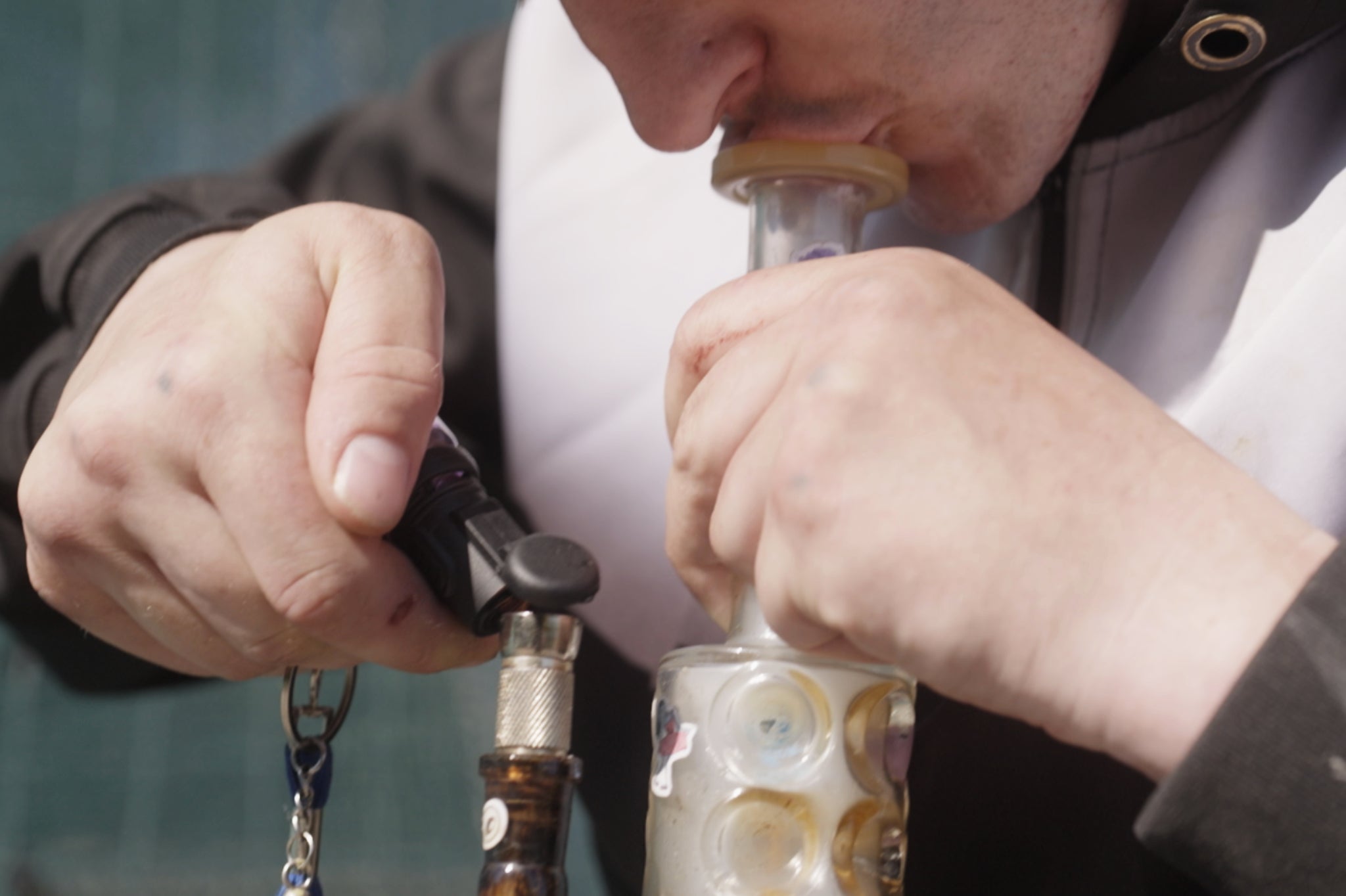
The sun is very hot, and he peels off his hoodie. Suddenly he lurches towards me, and I step back. “I’m not like, going to attack you or anything like that,” he laughs. “I’m just getting hot.”
I met Dave while I was visiting Stoke-on-Trent for five months in 2023 to make a documentary about dust for the BBC. I was trying to find out why the drug seemed to be confined to North Staffordshire and what effect it had on people. Nobody seemed to be able to answer the first question, but many people told me that it was associated with aggression, psychosis and sexual exploitation.
Dave was impossible to keep track of – he was never in the same place, and his phone was always dead. One day, he disappeared. I found out months later he’d been arrested for stabbing a man eight times and slashing his dog repeatedly in a row over a computer, while high on dust. He was convicted in October last year of attempted murder and received a seven-year sentence.
But it was a woman Dave was with who caught my attention. Ella* was still in her early twenties and, like everyone who takes dust, skinny and frail. Her story was desperately sad.
“When I first took it, I got sexually abused,” she says. “Someone forced me into taking it and then raped me.”
The drug made some men “very sexual” and others extremely paranoid, she says.
“I want people to understand how it makes you feel,” she says. “I want everybody to just get off it. Because it’s horrible, it is horrible.”
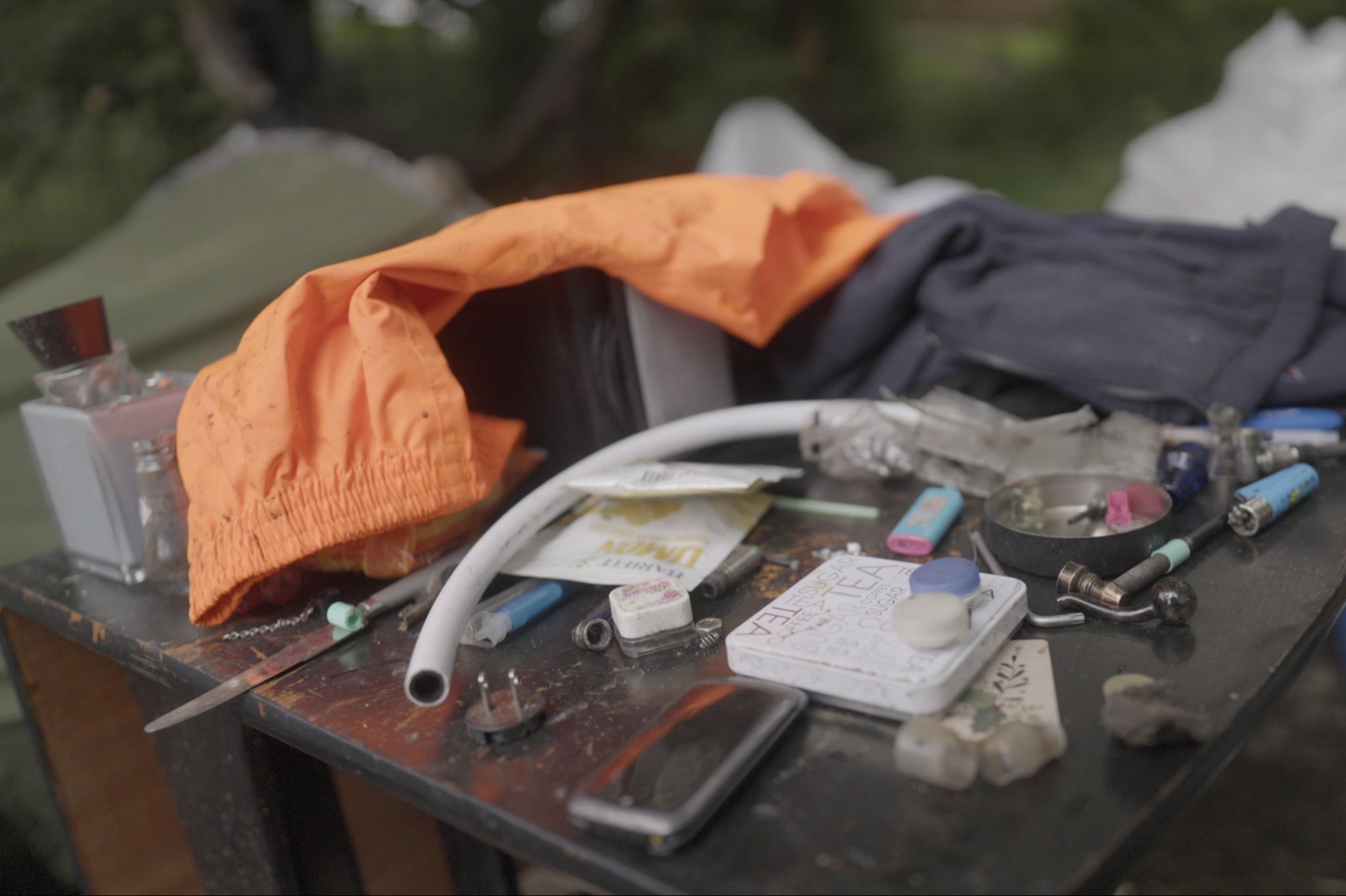
Ella was clearly traumatised but not helpless. She had recently overcome a heroin addiction and even tapered off methadone, the drug prescribed to addicts to help them stop using.
“But this dust, I won’t be able to stop it until I move from here, from Stoke-on-Trent,” she says.
“You can’t get off it [here] because you’re getting people pressurising me to take it, forcing me to take it when I don’t want to.”
Over time, I noticed that a surprising number of women were part of Stoke-on-Trent’s nomadic dust subculture, fading in and out of the strange tapestry of baroque architecture, Victorian terraces, crumbling bottle kilns and sterile retail parks; they were sleeping in tents secreted away in patches of overgrown post-industrial wasteland.
“There’s a lot of women on it,” says Abi*, a former sex worker. “You’d be surprised by some of the people that are smoking it.”
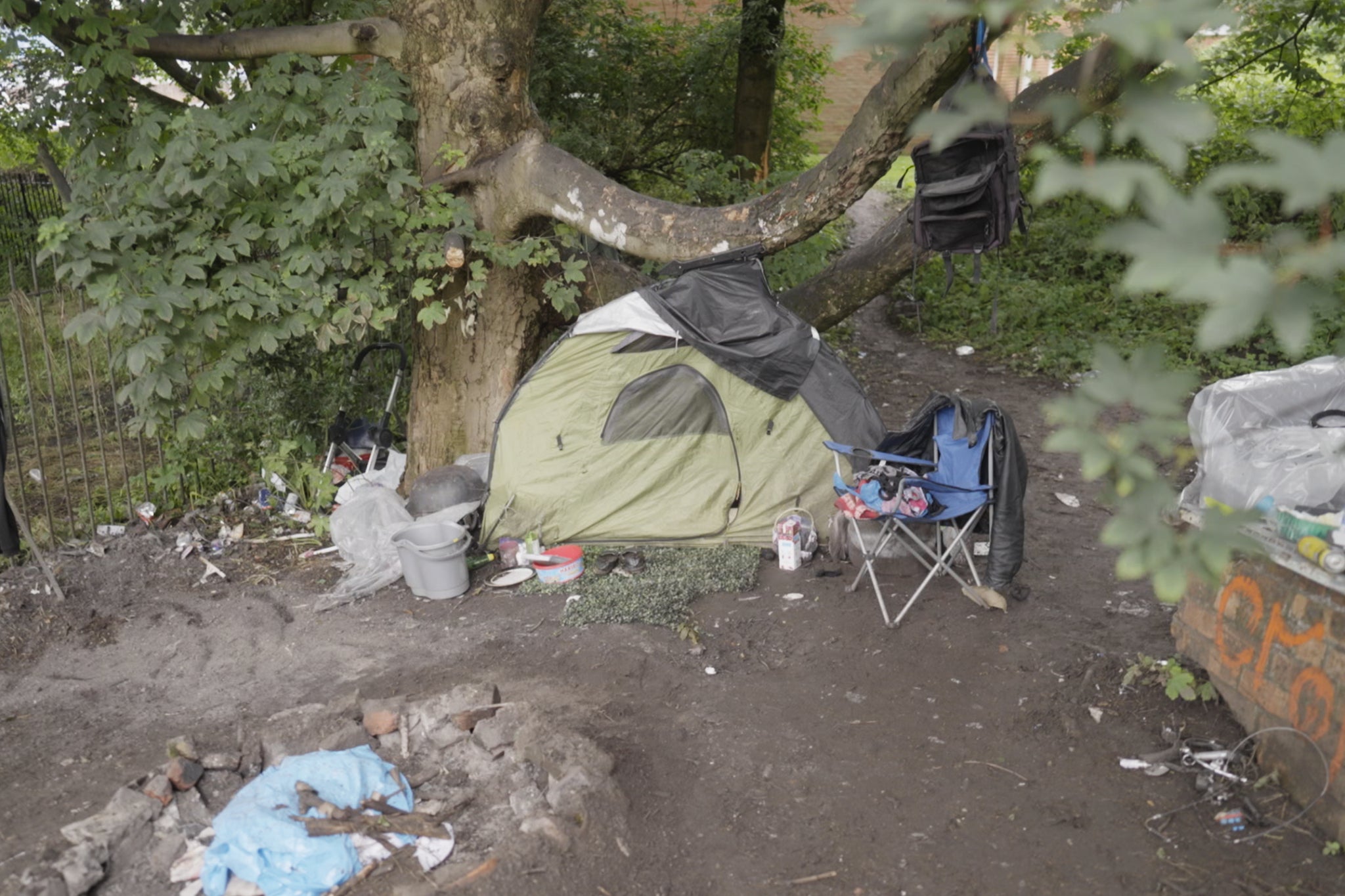
Abi is in her forties and has been in Stoke-on-Trent long enough to know everybody on the scene. She used to live underneath one of Burslem’s bottle kilns – a claim I might not have believed, had I not myself witnessed a man sheltering in one. Abi knows women in their teens and as old as 60 who are on the drug. One of the realities of the drug culture, she explains, is sexual exploitation.
“A ‘pip-nosh’ is a blowjob for a pipe,” she says. “You’ll get girls sit there in a room full of people and say, I’ll suck your d*** for a pipe. You have to tell them to have some self-respect. And then you get blokes asking girls for pip-noshes.”
Abi is now clean from dust after losing “everything” to the drug, she says.
“On dust, you seem to feel like you’re entitled to smoke anywhere. Like, wherever you are, you can sit in the middle of Hanley and just blast a pipe and not think anything of it, because it’s normal to you.”
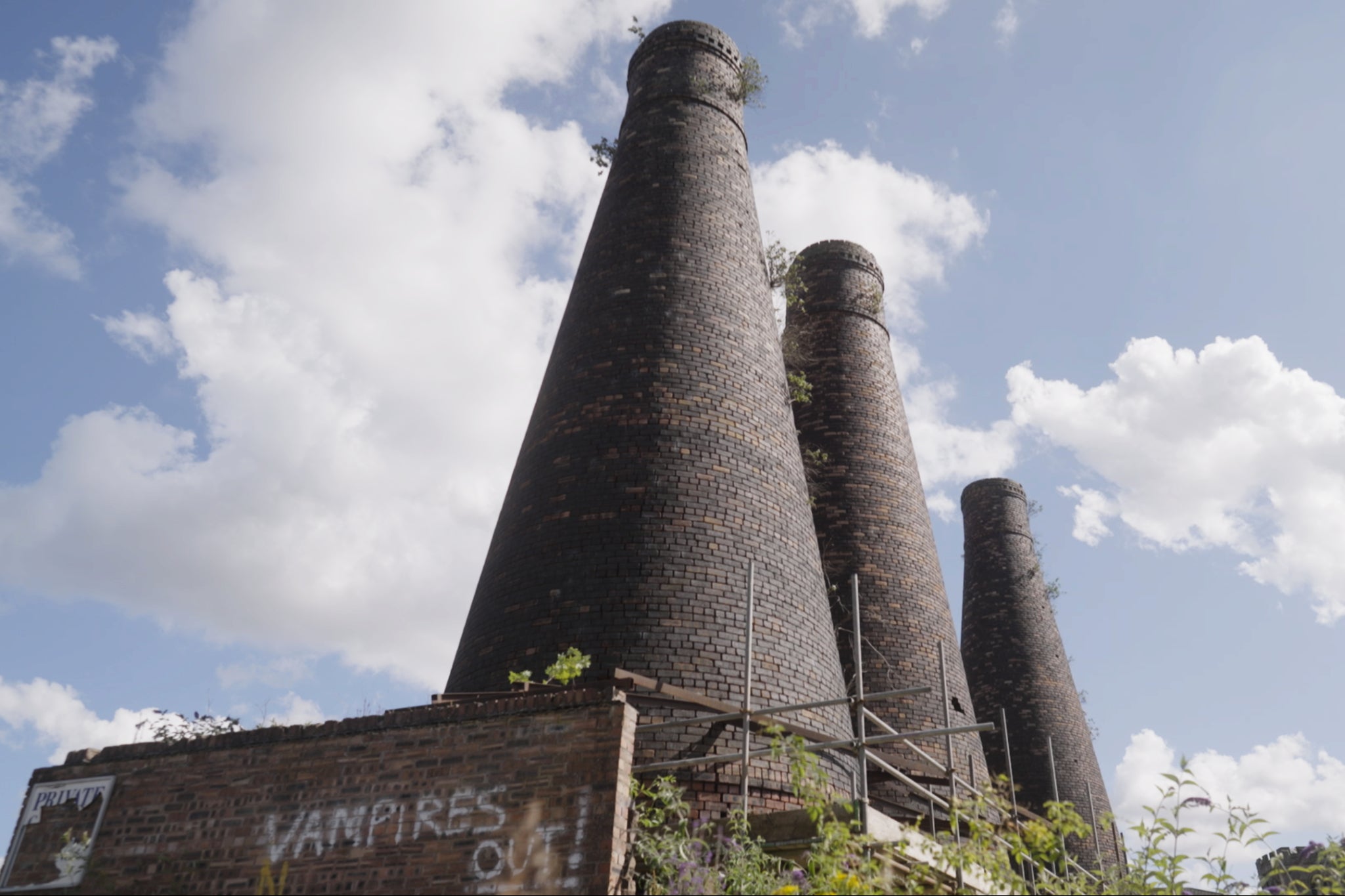
Hanley is one of six towns that make up the city of Stoke-on-Trent; Burslem is another. The city is ringed by pockets of investment: new hotels and retail parks for visitors to Alton Towers and the surrounding area, as well as impressive recent residential and commercial developments like the £60m Goods Yard. But its town centres remain in a state of disrepair. Many of the older hotels here house refugees and the homeless, and “dusties” wander the centres of Hanley, Burslem, and Longton.
The drug’s popularity is in part a signal of the scale of deprivation among Stoke-on-Trent’s mostly white underclass. Following the collapse of its ceramics industry, the area has become the 13th (out of 317) most deprived local authority in England, according to the 2019 Indices of Deprivation. Dust, meanwhile, is probably the most cost-effective stimulant money can buy. It is cheaper than methamphetamine and crack and according to users, its effects are much longer-lasting; it comes from the class of drugs known as cathinones, a category that includes mephedrone – the former legal high that was popular in the early 2000s – and bath salts, a notorious drug that peaked in America in the 2010s.
The low price comes at a cost to its users, though. Earlier this year, the Advisory Council for the Misuse of Drugs (ACMD) compiled an updated harms assessment for synthetic cathinones. The drug most commonly detected in dust was MDPHP, part of a sub-class that is thought to produce more aggression and paranoia in users. The report cited recent studies on MDPHP that show it induced aggressive behaviour in mice. It also acknowledged research at Staffordshire University suggesting that homeless women “are vulnerable to exploitative sexual violence associated with monkey dust use” and that there had been reports of “monkey dust being used to pay for sex work”.
But the ACMD report stopped short of recommending that dust be reclassified as a class A drug, noting that the problem in North Staffordshire remained localised and that reclassification might increase the stigma for users and restrict their access to health and social care support.
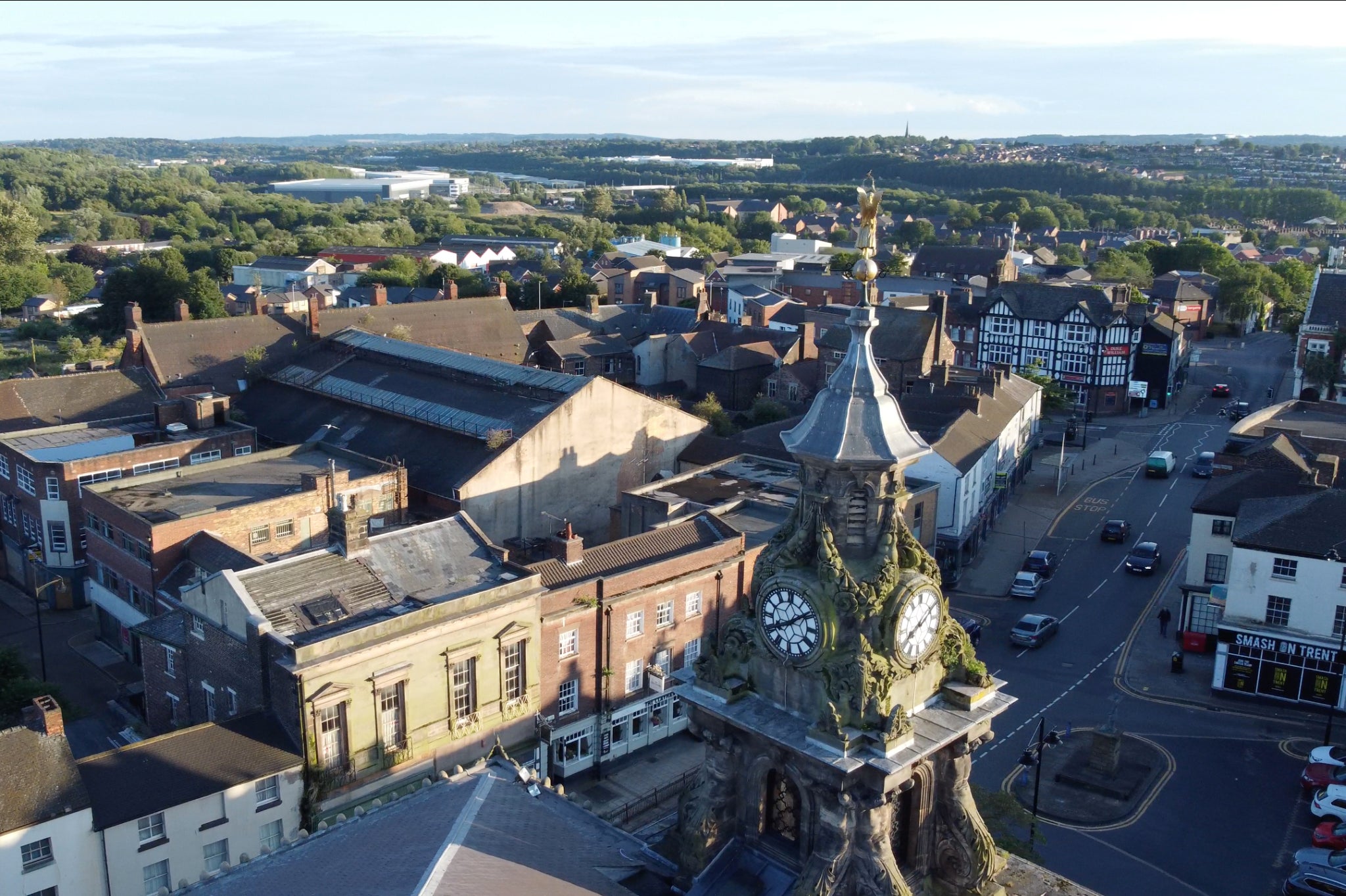
The question of why dust remains localised is an elusive one. In the mid-2010s, a new tier of drugs emerged out of the ashes of the legal highs’ boom. The New Psychoactive Substances (NPS) were imported from China via the dark web and sold by enterprising new entrants into the drug trade along different supply chains to legacy drugs like heroin and crack.
Dust is one such NPS. The most infamous, however, is “spice”, a synthetic cannabis mimic, which is the drug of choice in similarly deprived regions all over the UK. The question for Stoke-on-Trent is therefore perhaps not “why monkey dust?” but “why not spice?”
One unexamined cause is the city’s strange, fragmented layout. Dust’s itinerant users often walk for miles each day between Stoke-on-Trent’s six towns – something that is easier to do with a stimulant than a drug as incapacitating as spice.
There is also a simple reason why uptake has been slow outside of North Staffordshire, according to users: dust is horrible. There is arguably no drug more stigmatised as dirty, confusing, unpredictable and dangerous, especially among its user base. Almost everyone who takes it seems to hate it.
Abi thinks that the drug is more harmful than heroin.
“I was a relatively reasonably functioning addict when I was on heroin. Dust is completely different,” she says. “It does need reclassifying to a class A, definitely.”
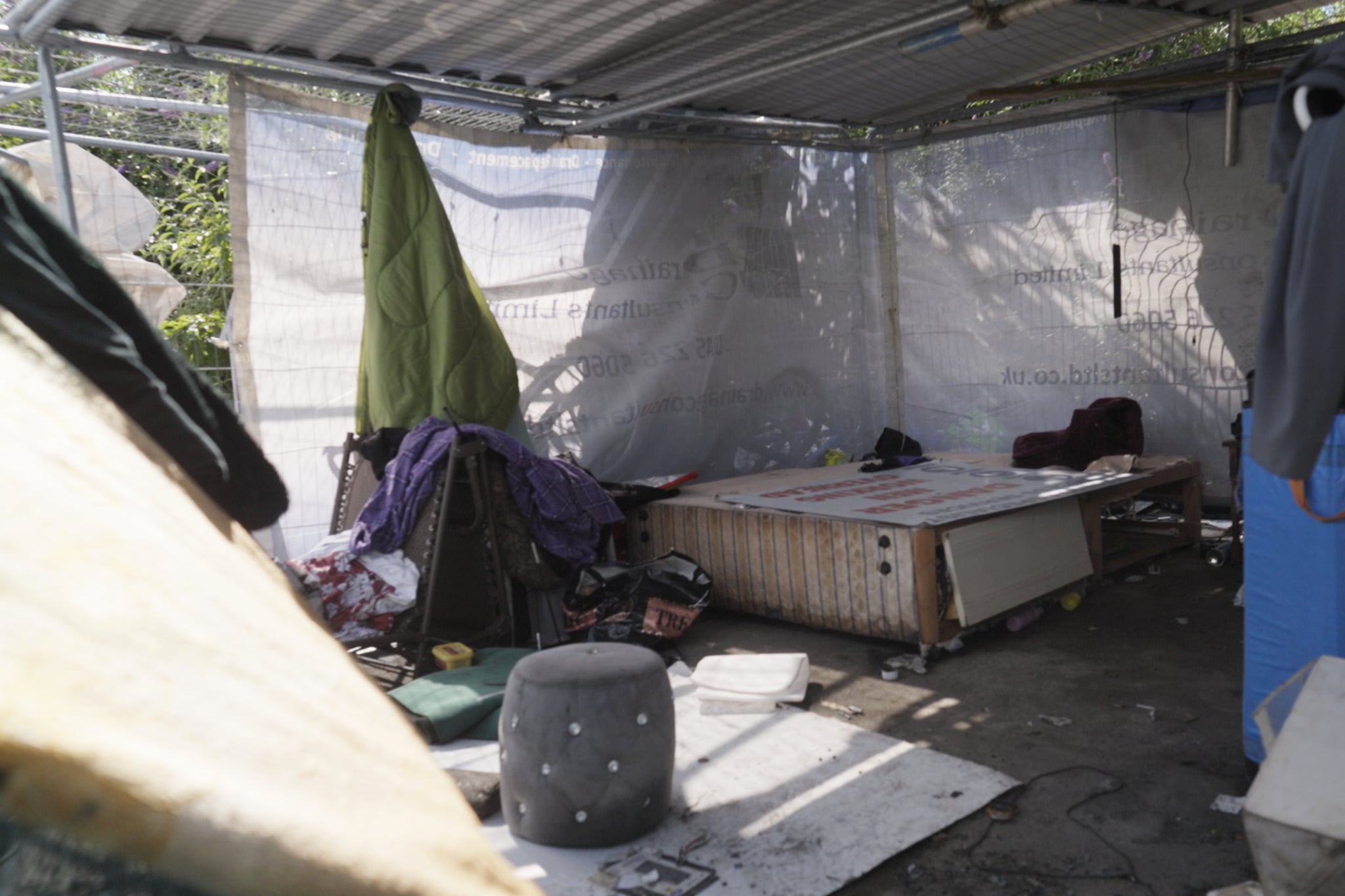
Last year, an inquest found that a seven-week-old baby had been exposed to monkey dust before his death following cardiac arrest. One social worker who visited the home said conditions were some of the worst she had seen in 16 years.
“There’s no child that’s safe around dust heads,” says Abi.
“The government needs to recognise how detrimental it’s been. They want to come and have a walk around Stoke and have a look at all the mumbling and incoherent bollocks that they’ll encounter. Because people are rotting away.”
Stoke is in need of an intervention. There are charities and drug and alcohol support services that work hard to ease the burden on users, such as the Christian-run Community Night Shelter in Burslem, which provides much-needed community, support and food. But there are many traumatised individuals who seem to avoid these services altogether, and run a daily gauntlet with darker, far less sympathetic characters, who drive a cycle of drug use, sexual exploitation and violence.
A few nights later, I am at another makeshift camp in a different corner of Stoke-on-Trent. It’s twilight, and another woman drifts into view through the trees and comes to sit by the fire. Kayleigh* is very small and looks hopelessly vulnerable. She talks at a hundred miles an hour and doesn’t make a lot of sense. She says she is staying in a tent tonight, but sometimes she sleeps outside on her backpack. She has shaved her head.
“I don’t mind not having any hair,” she says. “Those bugs get all over you.”
That evening, I accidentally inhale a cloud of dust. The smell is fetid – watery and corporeal, like fresh liver. The feeling is jittery, tense and deeply uncomfortable, as if my mind is a thread snatched between two pins. I drive home in the dark, paranoid and full of dread.



